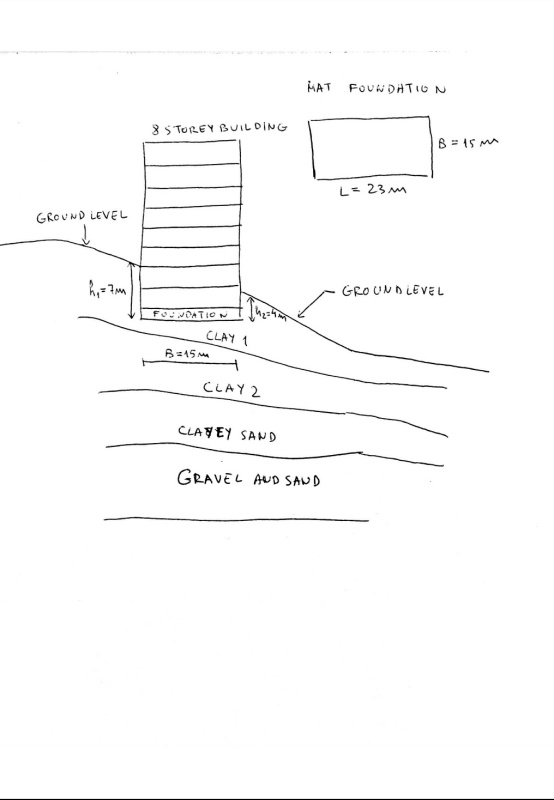Hi all!
I have a question regarding the settlement analysis of a raft foundation on a sloped field (im attaching a rough sketch). My question is, what should I take as foundation depth when I do the calculations. On one hand, on the side where the foundation depth is 7m, the load of the removed soil is greater than the load from the structure. On the side where the foundation depth is 4m, that is not the case. Is it safe to say I will have differential settlements? Should I calculate the settlements for both foundation depths and see the difference in settlements?
All the books that I've looked into have assumed that the ground level is flat. So do some software that I've tried. I'm curious what method is applied for settlement calculation in a scenario like this.
Help would be much appreciated. I hope someone in the forum has faced and knows the right method for a scenario like this. Also, if you've come across books that explain this kind of problem please let me know about the titles and authors.

I have a question regarding the settlement analysis of a raft foundation on a sloped field (im attaching a rough sketch). My question is, what should I take as foundation depth when I do the calculations. On one hand, on the side where the foundation depth is 7m, the load of the removed soil is greater than the load from the structure. On the side where the foundation depth is 4m, that is not the case. Is it safe to say I will have differential settlements? Should I calculate the settlements for both foundation depths and see the difference in settlements?
All the books that I've looked into have assumed that the ground level is flat. So do some software that I've tried. I'm curious what method is applied for settlement calculation in a scenario like this.
Help would be much appreciated. I hope someone in the forum has faced and knows the right method for a scenario like this. Also, if you've come across books that explain this kind of problem please let me know about the titles and authors.




![[idea] [idea] [idea]](/data/assets/smilies/idea.gif)
![[r2d2] [r2d2] [r2d2]](/data/assets/smilies/r2d2.gif)